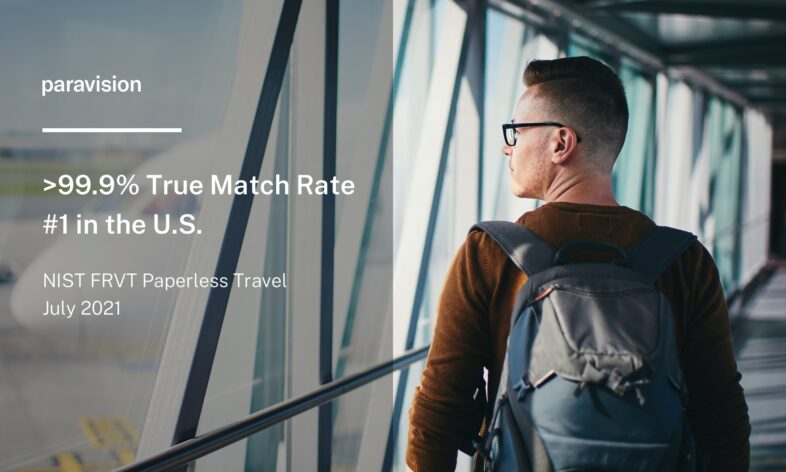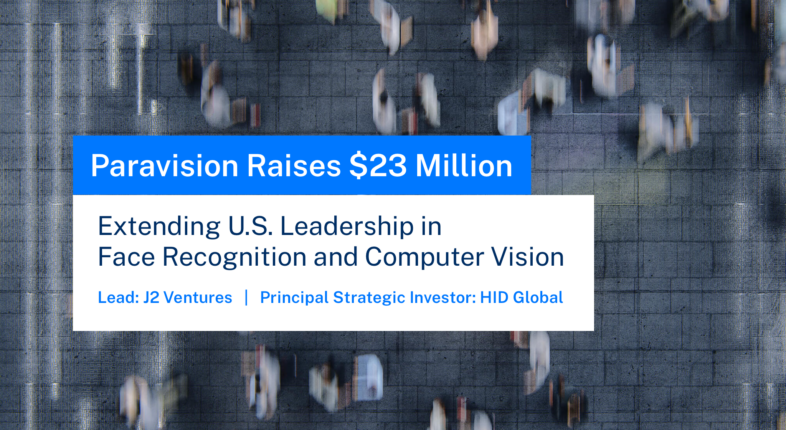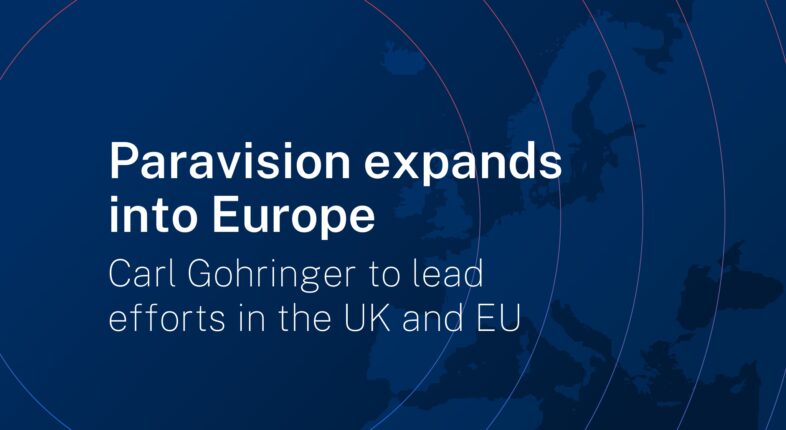Originally published in IBMATA’s Border Management Today Journal, Issue 7.
e-Gates and kiosks at border control and immigration that take advantage of ePassports and facial recognition have long been readily accepted by passengers. Increasingly, the same technology is being used to reduce bottlenecks on outbound traffic in airports.
The success of these initiatives has prompted many governments the world-over to initiate and accelerate programmes embracing a digital-first paradigm. The UK government, for example, has published its 2025 UK Border Strategy and has inaugurated the Border Vision Advisory Group (BVAG) to help deliver on this strategy, whilst the European Union has actively been developing its Entry Exit System (EES) and Advanced Travel Information Authorisation System (ETIAS) to be adopted by its member states.
The Global Guidelines for Safe & Seamless Traveller Journey (SSTJ) by the World Travel & Tourism Council (WTTC) paints a vision where passengers no longer need to stop multiple times during their journey to verify their documents and identity; they simply need to undertake this exercise once at the start of their journey, using their own mobile phone, unlocking a fast, frictionless experience that begins at home.
However, the successful implementation of a frictionless digital border strategy must begin well in advance of the physical border. The flipside to the coin of expedited simplified passenger travel is the exporting of the border: obtaining accurate data about a passenger and making decisions about that passenger as early as possible, ideally before they even start their journey. Not only does this allow border agencies to deal with issues less expensively before travellers arrive at their borders, but it also allows for greater flexibility in how to assist them at the border itself.
The good news is that there have been recent technical advances that now allow what would not have been possible a mere few years ago. Significant amongst these are:
- Advances in the accuracy of facial recognition. As demonstrated by ongoing testing by the US Government’s National Institute of Standards and Technology (NIST), the accuracy of facial recognition has advanced at an impressive rate. These accuracy rates have continued to improve (in some cases with five-fold reductions in errors since 2018) as NIST conducts its ongoing Facial Recognition Vendor Tests. To put this in context, in July of this year, NIST published its first report on facial recognition for paperless travel, in which Paravision achieved better than 99.9% matching accuracy for airplane boarding, ranking #1 among all “Five Eyes”-based companies. This level of accuracy was unheard of a few short years ago.
- Ubiquity of NFC enabled smartphones. The ability to use a mobile phone’s NFC capability is now available across the breadth of most Android and Apple phones. This allows governments to validate the authenticity of a passenger’s travel documents remotely, from a distance and before travel, using nothing more than a passenger’s own mobile phone and ePassport. Additionally, it allows the accurate capture from the document’s chip of the passenger’s biographic data and, importantly, a face image that has been assessed by the issuing government to comply with the International Civil Aviation Organization (ICAO) photograph guidelines. With ICAO’s recent publication of the standard for a Digital Travel Credential (DTC), there is also the option of storing a derivation of the ePassport’s chip directly on the passenger’s mobile phone.
In addition to being able to validate the document and accurately capture the passenger’s details from it, the combination of the above two mentioned advents allows two key benefits specific to facial recognition:
- Verify document ownership. The utilisation of highly accurate facial recognition to match the ICAO compliant face image obtained from the chip against a liveness-verified selfie image determines that the applicant is indeed using their own travel document and not somebody else’s.
- Capture of a high-quality ICAO-compliant reference image. Obtaining the ICAO-compliant enrolment image from the chip of the ePassport allows the construction of high-quality reference datasets that can be used in passenger facilitation solutions when the passenger physically arrives at a border.
The two sides of this coin, therefore, can broadly be categorised as:
1. Digitally Exporting the Border Away from the Physical Border
The benefits of exporting the border are significant:
Reduced Friction and Cost
Reducing friction and cost in the process of interacting with travellers, and a significantly enhanced, expedited, and improved customer experience by enabling self-service digital channels, reducing the reliance on costly physical Visa application centres (VAC).
Enhanced Security through Early Capture of Data
Capturing accurate, secure, and verified data, including biometrics, earlier, before the visitor arrives at the border and ideally before they leave their country of origin. This can be undertaken via pre-enrolment for any number of digital programmes, including:
- applying for an eVisa.
- registering for an electronic travel authorisation (eTA).
- enrolling into a trusted traveller border facilitation programme for returning citizens or beneficiaries of a free travel zone.
Digital onboarding into relevant programmes has progressed to the point where Digital Permissions are becoming the new norm. Increasingly, physical tokens and vignettes will no longer be required to assert rights and statuses. Officials need only access your digital records.
2. Digital Transformation of the Physical Border
Onboarding into the appropriate digital programme or channel prior to a passenger’s arrival at a physical border significantly enhances the flexibility in processing arrivals. Advance analysis of biographic and biometric data and cross-referencing against the appropriate datasets allows maximum flexibility in granting permissions and segmenting passengers.
Whilst eGates have become a common fixture at most countries’ borders, these will increasingly be augmented by a variety of additional channels accorded to returning citizens, citizens of other nations participating in a freedom of movement treaty, and optionally eTA applicants or travellers enrolled in a trusted traveller scheme. Expedited and freer-flowing channels can consist of biometric corridors, where passengers can be matched against lists of pre-enrolled and pre-approved applicants. Digital permissions coupled with the ability to process ePassport DTCs can minimise the number of times passengers need to have their physical documents examined and their identities verified.
How Paravision Can Help
Headquartered in San Francisco, California, Paravision is a team of experts in AI, computer vision, and machine learning. Known for our highly accurate facial recognition solutions, as independently evaluated by US NIST, we are dedicated to delivering mission-critical technology that excels at accuracy, offers robust performance, provides superior levels of security, and can be deployed in any environment.
Paravision is actively applying our expertise and the exceptionally high levels of accuracy of our solutions to border challenges in the following ways:
- Moving Toward Full Automation of Digital On-Boarding and Minimising Manual Adjudication. When considered at the scale of national systems, where a digital eTA alone can generate tens of millions of transactions per year, even the smallest improvement in facial recognition accuracy can deliver a drastic reduction in the back-office costs that result from the unnecessary manual adjudication of falsely rejected face matches. Paravision’s superior accuracy delivers 4 to 6 times fewer errors that need to be manually adjudicated when compared with other solutions commonly deployed on the border.
Paravision’s superior accuracy delivers 4 to 6 times fewer errors which need to be manually adjudicated when compared with other solutions commonly deployed on the border.
- Ultra-Quick and Accurate Searching of Back-End Databases. Early and accurate data captured remotely at a distance in a self-service manner from applicants provides significant value. Before granting permissions, this data needs to be checked and cross-referenced against national biometric systems. Paravision’s face recognition engine features Scaled Vector Search (SVS) technology, which allows organisations to perform matches with ever-larger databases quicker. The SVS-powered face recognition engine can process hundreds of transactions every second with minimal latency and generates accurate results for databases with tens of millions of unique identities.
- Enhanced Computer Vision and Real–Time Processing on the Border. Exporting the border by capturing biometric details of passengers before they arrive allows for enhanced processing, facilitation, and segmentation when passengers actually arrive at the physical border. However, real-world environments can prove challenging to the deployment of solutions such as biometric corridors. Paravision’s extensive research into advanced machine learning delivers:
- advanced detection, image quality analysis, and matching capabilities.
- advanced ability to deal with extreme pose angles and partial obfuscations, such as from COVID face masks.
- liveness determination and 3D mask detection.
The combination of these capabilities enables facial recognition that is much faster, more consistent, and motion or pose tolerant than last-generation technologies. While this can speed up and improve the experience in typical air travel or pedestrian applications, it can also enable new fully automated border management paradigms.
For example, we have proven our ability to detect multiple faces in moving vehicles through windows, which opens facilitation and automation opportunities on land border.
Collaboration is Vital
At Paravision, we recognise and respect that no single organisation holds all the answers. To successfully meet the challenges of delivering the border of tomorrow, we actively seek and work with partners in order to couple our expertise in machine learning with their and their customer’s visions of future borders.
Future borders are digital and frictionless, and the benefits can be realised today.


 More News
More News

